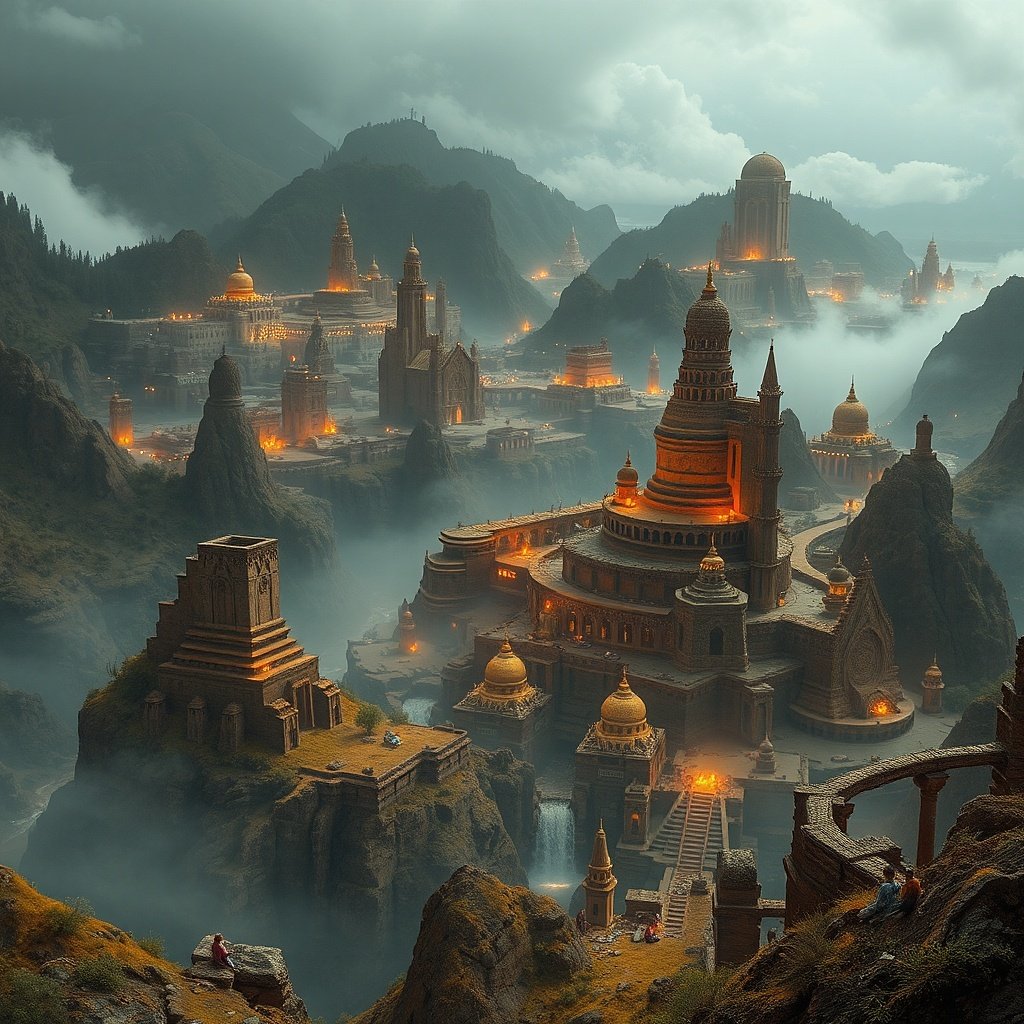Humanity has always built, innovated, and expanded—but history shows that every great civilisation that rose also risked collapse when progress outpaced balance. As megacities today face climate strain, pollution, and population surges, the wisdom of extinct civilisations offers not relics of failure, but blueprints for survival.
From the Maya’s ingenious rainwater systems to the Indus Valley’s sanitation design and the warnings of Easter Island, ancient societies once mastered sustainability within their limits. Their lessons—rooted in cooperation, environmental respect, and intelligent design—resonate louder than ever in the age of urban sprawl and smart grids.
By studying their triumphs and mistakes, we can chart a future in which sustainable megacities thrive in harmony with nature rather than at its expense. Here are five timeless echoes guiding our path toward a more resilient urban tomorrow.
1. The Maya: Masters of Water and Urban Resilience
The Maya civilisation flourished in Central America despite harsh droughts and limited rivers. Their survival hinged on revolutionary rainwater-harvesting systems, canals, and underground cisterns—known as chultuns—that stored precious water during dry seasons. Cities such as Tikal were designed around natural depressions to capture runoff, demonstrating a deep understanding of ecology.
Modern megacities facing water scarcity—like Mexico City or Cape Town—mirror these same challenges. By integrating Maya-inspired techniques, cities can design decentralised water networks, rooftop catchment systems, and urban wetlands to recycle and store rainwater. The Maya remind us that infrastructure need not fight nature—it can collaborate with it.
Urban Echo: Future cities must view water not as a commodity but as a shared cycle—harvested, preserved, and reused with intelligence and reverence.
2. The Indus Valley: Architects of Clean and Inclusive Urban Life
The Indus Valley Civilisation (2600–1900 BCE) achieved urban design centuries ahead of its time. Cities like Mohenjo-Daro featured structured grids, standardised bricks, and advanced drainage systems connecting every home. Public baths, covered sewers, and shared wells ensured both hygiene and equality. This infrastructure symbolised communal responsibility—each household contributing to the well-being of all.
Modern cities can learn from this integrated design philosophy. Today’s challenges—sanitation inequity, pollution, and overcrowding—demand the same collective mindset. Circular waste systems, smart sewage recycling, and mixed-income housing echo the Indus Valley’s balance between innovation and inclusion.
Urban Echo: True sustainability isn’t only ecological—it’s social. Just as the Indus cities linked homes through shared drains, modern megacities must connect communities through shared purpose.
3. Ancient Rome: Building for Longevity and Public Good
The grandeur of Ancient Rome lay not just in its architecture, but in its infrastructure. Its aqueducts stretched for miles, delivering clean water to fountains and baths, while roads and sewers formed the veins of an enduring urban organism. Roman engineers built with durability and access in mind—public benefit was as vital as design brilliance.
Modern megacities, often caught in cycles of rapid construction and decay, can rediscover this ethos of permanence. Investing in green infrastructure, renewable transport, and modular architecture creates cities that last generations, not decades. Imagine aqueducts reborn as solar bridges, channelling energy and water across skylines—a sustainable tribute to Roman ingenuity.
Urban Echo: Infrastructure must serve both the planet and the people. In tomorrow’s cities, endurance and equity should be the new measures of progress.
4. Easter Island (Rapa Nui): A Warning Against Overexploitation
Easter Island’s tragedy remains one of history’s starkest environmental parables. Once lush and resource-rich, Rapa Nui collapsed after overharvesting its forests to build massive stone statues (moai). Without trees, the soil eroded, crops failed, and society disintegrated. The island’s isolation turned resource scarcity into irreversible decline.
Our modern world faces the same danger—only on a planetary scale. Overconsumption, deforestation, and unrestrained industrialisation are today’s moai. Megacities can avoid this fate by embracing circular economies, urban reforestation, and zero-waste policies. Sustainability must shift from token policy to moral imperative.
Urban Echo: Every city is an island—its resources finite, its future fragile. Growth without restraint leads not to prosperity, but to silence. The lesson of Rapa Nui is clear: balance is survival.
5. Mesopotamia: The Cycle of Innovation and Environmental Limits
Known as the “Cradle of Civilisation,” Mesopotamia pioneered agriculture and urban planning along the Tigris and Euphrates Rivers. However, centuries of intensive irrigation led to soil salinisation, rendering farmland barren and triggering societal decline. Their success sowed the seeds of their downfall—an enduring warning that innovation must respect natural limits.
Modern megacities face a similar dilemma. Overreliance on fossil fuels, groundwater extraction, and monoculture parallels Mesopotamia’s unsustainable irrigation practices. The solution lies in regenerative design: green belts, smart water systems, and urban farming that replenishes rather than depletes. By integrating ecology into policy, cities can sustain both their populations and the planet.
Urban Echo: Innovation without restraint is a mirage. Sustainability begins where technology and humility meet—when cities learn to give back as much as they take.
Conclusion: Ancient Wisdom for Future Cities
The fall of great civilisations was not inevitable—it was preventable. Their stories echo across time, urging us to build cities that harmonise ambition with awareness. As we design sustainable megacities, we stand at the crossroads of the same choices: exploit or conserve, expand or endure.
The Maya teach us water reverence. The Indus Valley reveals the power of community. Rome inspires lasting public infrastructure, while Easter Island and Mesopotamia remind us of nature’s breaking point. Together, these voices from the past form a blueprint for our survival.
If we listen—truly listen—our future cities can rise not as monuments to excess, but as testaments to coexistence.

